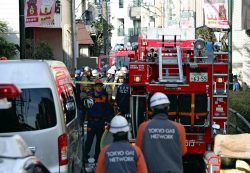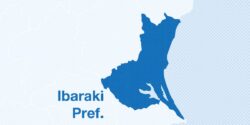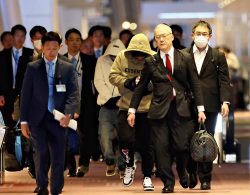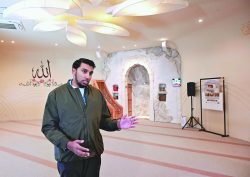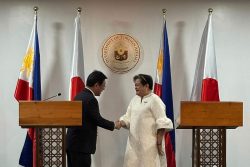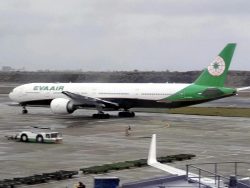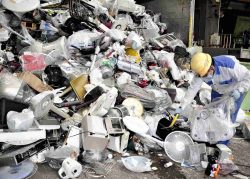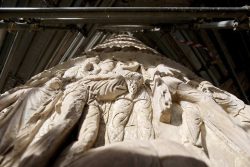Nagasaki Court Recognizes Claims of Only 15 Plaintiffs; Acknowledges Radioactive Black Rain Fell on Villages
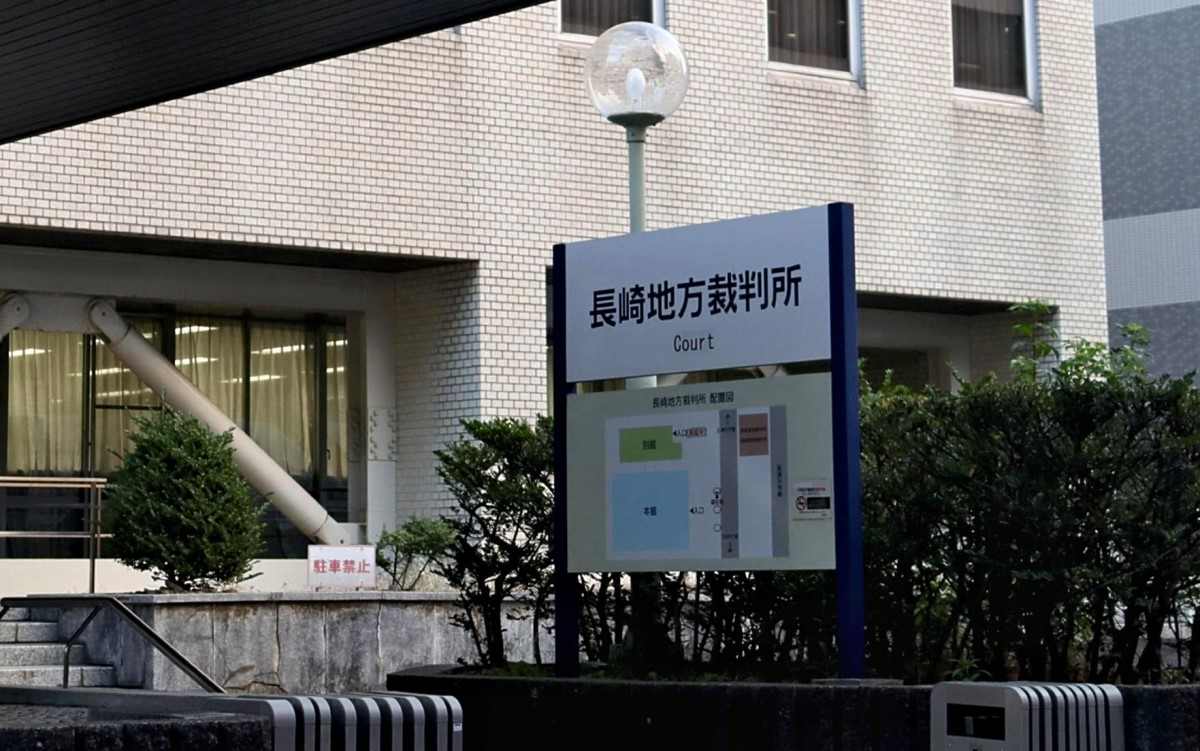
Nagasaki District Court
16:16 JST, September 10, 2024
NAGASAKI — Of 44 plaintiffs who experienced the 1945 atomic bombing of Nagasaki outside the government-designated relief zone, the Nagasaki District Court on Monday recognized 15 people who were in the eastern part of the city outside the relief zone as hibakusha atomic bomb survivors entitled to a heightened level of government support.
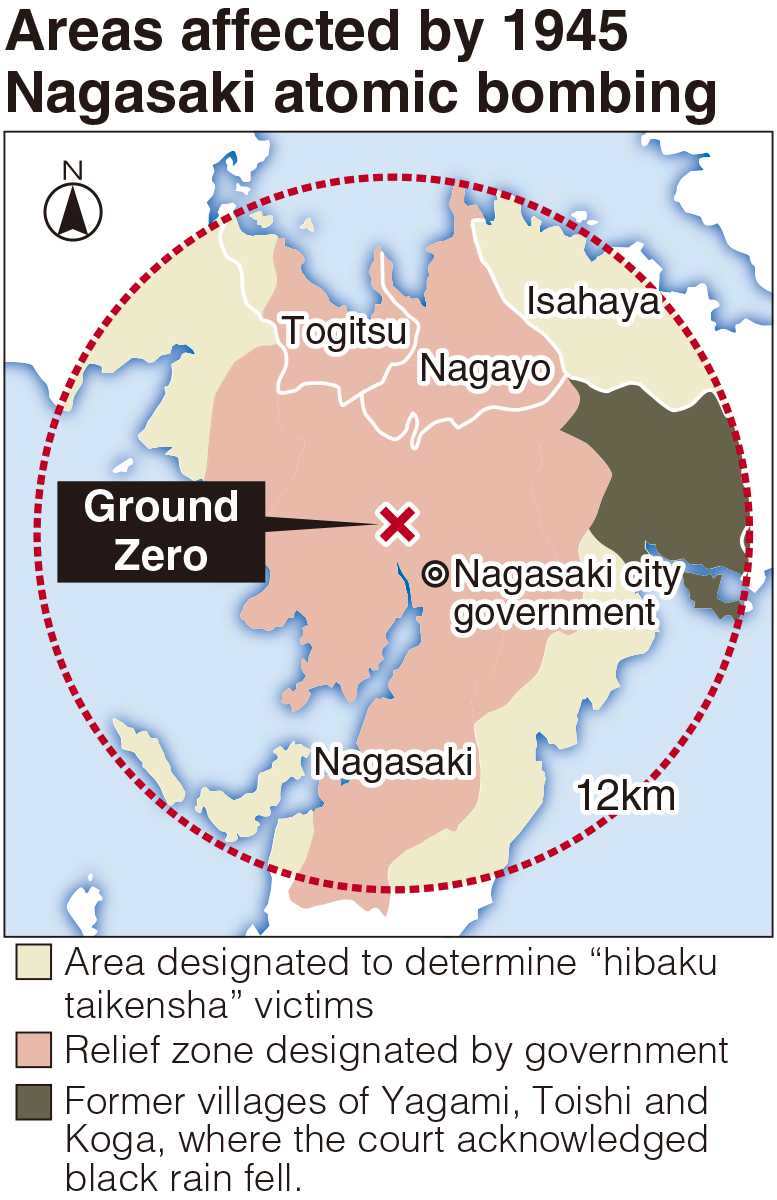
The claims of the remaining 29 plaintiffs who were in other areas were denied.
The lawsuit was filed by 44 “hibaku taikensha” plaintiffs in Nagasaki, including four who have died, who demanded that the Nagasaki prefectural and city governments issue them Atomic Bomb Survivor’s Certificates. Presiding Judge Shinsuke Matsunaga acknowledged in the ruling that so-called black rain containing radioactive substances fell in the eastern part of the city following the atomic bombing.
The court recognized as hibakusha 15 of the plaintiffs, including two who have died, and ordered the certificates be issued to them. This is the first ruling to recognize individuals as hibakusha based on exposure to radioactive black rain in Nagasaki.
Hibaku taikensha refers to people who experienced the atomic bombing of Nagasaki within a 12-kilometer radius of ground zero but who were outside the relief zone designated by the government under the Atomic Bomb Survivors’ Assistance Law. People recognized as hibaku taikensha are provided with medical expenses for mental disorders associated with their atomic bombing experiences and other problems.
Relief measures for them are different from those for officially recognized hibakusha, who are exempt from medical expenses in principle.
The Hiroshima High Court in 2021 recognized as hibakusha plaintiffs who claimed they were exposed to black rain outside the government-designated relief zone in Hiroshima, and that ruling was finalized. The government has been providing relief measures based on new criteria since 2022.
Monday’s ruling recognized that black rain fell on the three former villages of Yagami, Toishi and Koga in eastern Nagasaki where the 15 plaintiffs were on Aug. 9, 1945, when the atomic bomb hit Nagasaki. It reached this conclusion based on testimony provided by the prefecture, the city of Nagasaki and others.
The court ruled there was a strong possibility that radioactive materials from the bomb fell on the three eastern villages, which were downwind of the hypocenter of the atomic bombing.
Since the Hiroshima High Court’s ruling was finalized, the government has recognized individuals as hibakusha from the Hiroshima atomic bombing based on two conditions under the new criteria. Those conditions are: (1) that it is impossible to disprove that the person was exposed to black rain and; (2) that they suffer from ailments related to their liver or other dysfunctions.
The latest ruling said it was difficult to find reasonable reasons for the government not to take into account the fact that black rain fell. As the 15 plaintiffs have been recognized as suffering from liver dysfunction and other problems, the court concluded that not recognizing them as hibakusha was highly irrational in light of socially accepted thinking.
However, the court ruled there was no proof of black rain falling in other areas where the remaining 29 plaintiffs were at the time of the Nagasaki atomic bombing and that their diseases might have been caused by other factors than radiation.
Regarding the Nagasaki atomic bombing, plaintiffs have filed similar lawsuits seeking recognition as hibakusha since 2007. However, they lost their cases, as the Supreme Court ruled that it was impossible to say the plaintiffs had been in circumstances that could damage their health. Some of the plaintiffs filed a lawsuit in 2018 after the Supreme Court’s ruling was finalized.
“Relevant ministries and agencies will closely examine the ruling and the government will discuss the issue with Nagasaki Prefecture and Nagasaki City to handle it in an appropriate manner,” Chief Cabinet Secretary Yoshimasa Hayashi said at a press conference following Monday’s ruling.
"Society" POPULAR ARTICLE
-

Tokyo Zoo Wolf Believed to Have Used Vegetation Growing on Wall to Climb, Escape; Animal Living Happily after Recapture
-

JAL, ANA Cancel Flights During 3-day Holiday Weekend due to Blizzard
-

Snow Expected in Tokyo, Neighboring Prefectures from Jan. 2 Afternoon to Jan. 3; 5-Centimeter Snow Fall Expected in Hakone, Tama, and Chichibu Areas
-
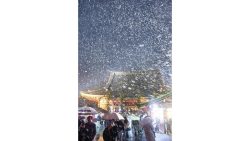
Tokyo, Yokohama Observe First Snowfall of Season; 1 Day Earlier than Average Year
-

M6.2 Earthquake Hits Japan’s Tottori, Shimane Prefectures; No Tsunami Threat (Update 4)
JN ACCESS RANKING
-

BOJ Gov. Ueda: Highly Likely Mechanism for Rising Wages, Prices Will Be Maintained
-

Japan Govt Adopts Measures to Curb Mega Solar Power Plant Projects Amid Environmental Concerns
-

Core Inflation in Tokyo Slows in December but Stays above BOJ Target
-

Osaka-Kansai Expo’s Economic Impact Estimated at ¥3.6 Trillion, Takes Actual Visitor Numbers into Account
-

Major Japan Firms’ Average Winter Bonus Tops ¥1 Mil.


